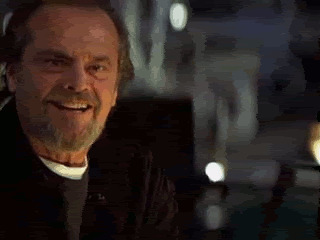Since my dream has ended, I've gathered and abbreviated some of my notes on systems so you guys can see what kind of game in general I wanted to make:
This is not an arcade game, and should be designed with a console mentality to bring in a broad audience while retaining the spirit of classic Capcom fighting games. Longer matches, simplified control schemes and characters with universal appeal bring in players from atypical audiences, while flexibility of combat systems, fluidity of play and rapid strategic adjustments will strengthen the competitive demographic.
System Overview:
Unique Attack Theory:
-similar to stands, 4th attack button to modify main attack buttons or create separate utility
Universal Defense Theory:
AAA - Roll (hit invincible, distance varies by character but always 75 frames, can be used as a reversal)
jAAA - air parry
6AAA - towards parry (whiffs into roll)
2AAA - low parry (whiffs into roll)
4AAA - push block (during blockstun, otherwise rolls) - pushes 2.5 character distances, swaps player character
-overlapping inputs to help mitigate option select abuses or mashing parry
Parry Theory:
-3s parry window - 10 frames, 6 frame sloppy input, 3 frame red normals, 2 frame red specials/supers
-metered parry theory - 15 frame window, half super stock, high/low separation?
--balanced by meter cost, slightly more involved input, whiff is a punishable roll
-freezes screen for 16 frames
Button Layout options:
-Optimal: LMHS - works on pad perfectly, easy to understand for new players but requires combinations for partner system
-Expanded: LMHSE - frees up inputs for special moves, simplifies necessary system inputs but increases number of buttons
-Normal vs Expert - two choices at character select(opt out in options menu) expert is standard layout, expert distinction to make casuals more comfortable choosing normal mode
--Normal mode: Normal/Special/Unique/Exchange - doesn't reduce buttons, but simplifies inputs
---no motions/charges, but can't choose strengths, moves chosen by direction + button like Smash Brothers
---limited normal moves, supers done by direction + any two buttons
---partner follows point character automatically in simple mode
---throws are automatic at close ranges with normal button(ST-style)
---no parries, pushblock activated by mashing during blockstun
---roll activated by mashing during wakeup(back roll by holding away only available to normal users)
Partner Theory:
-down throws, raw switch, situational desperation moves
-reverse snaps: costs 1 bar, 2-frame hit throw(counts as special move), swaps characters(think Goku holding Raditz and calling Piccolo)
-swapped out characters regain red health at 25 per second, then normal health at 10 per second(1000 is average full health)
-point character regains red health at 10 per second after not being in or putting the opponent in hit- or block-stun for 300 frames
-red health is 50% of the last combo's damage, reset after each successive attack
Timer:
-Timer is 250 ticks, each tick is 60 frames
-timer can be affected by desperation moves
Ratio System:
-ratio system is automatic to simplify character screen, no extra selection
-to activate, select the same character twice
-doubles character health
-during battle, bar is twice as thick for single character as emphasis
-no partner attacks, but cannot be chip killed
Throw theory:
-3s-style(S+L) vs ST-style(clH)
3s - allows for normal kara throws(expert mode only)
ST - frees up S+ inputs for special moves(normal mode only)
Back/Forward/Down throws
Throw techs are 3 frames, down throws have 5 frame tech windows but change characters
Universal Kara theory:
-Rolls can be canceled into throws, specials and normals within the first 3 frames
-moves the character forward 0.5 character distances
Super Theory:
-Equivalent usage as EX moves in Street Fighter, flash but no freeze(portrait flash w/voice)
-moderate damage but drastically increased utility
-utility wholly separate from special moves
-portrait flash in background, animated
Super bar - 2 parry/push stocks per bar, 5 bars?
Stun Theory:
stun meter- no separate bar, rim of health bar glows when close to stun(75%)
Desperation Moves(ougi):
-Costs 5 bars, no health requirement
-character-specific screen freeze
-activated by LMHS
-potential situational requirement?
--stunned opponent, partner knocked out, knocked down, varies by character
-not(with rare exception) a high damaging attack or reversal, more like a system that changes the pace of the game
--in SF4, Dudley's CCB gives him longer combos or a more damaging AA in situations he could already attack from
--Rose's Soul Satellite gives her situational advantage that she couldn't get before
---Desperation moves will be situational advantages like Soul Satellite, not additional leverage like Corkscrew Blow
-gives the character major advantages that they DID NOT HAVE before
Meter Gain Theory:
-1 bar is equal to 200 damage done
-chip gives 50% of full meter
-blocked attacks give 25% of full meter
-bar changes color at each full stock, glows at 5 bars to indicate Desperation Move availability(5 bars is max)
Chip Damage Theory:
-Chip is 30% of full damage
-push block negates chip damage for 45 frames
-chip damage doesn't affect red health but stops recovery




